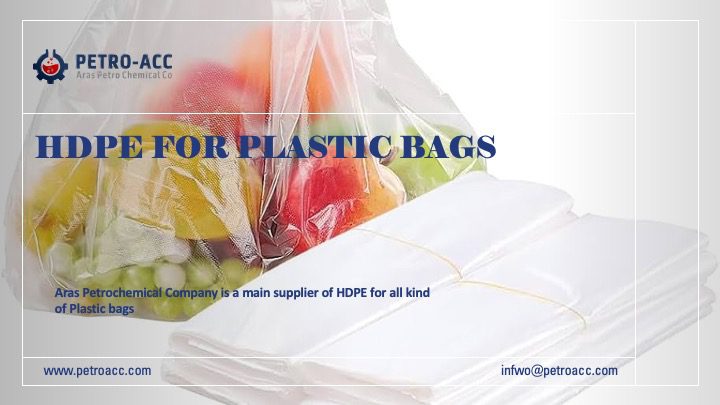HDPE (High-Density Polyethylene) is a commonly used plastic material for manufacturing plastic bags due to its durability, lightweight nature, and cost-effectiveness.
Properties of HDPE:
Density: 0.93 – 0.97 g/cm³
Molecular Structure: Linear with minimal branching, resulting in higher density and stronger intermolecular forces.
Strength: High tensile strength, resistant to tearing and punctures.
Chemical Resistance: Resistant to many chemicals, including acids and solvents.
Moisture Barrier: Excellent water resistance.
Why HDPE is Used for Plastic Bags:
Durability: Stronger and less prone to tearing compared to LDPE (Low-Density Polyethylene).
Cost-Effective: Cheaper to produce in large quantities.
Lightweight: Ideal for carrying items without adding significant weight.
Recyclable: Often marked with the recycling code #2, though recycling rates can vary.
Common Uses of HDPE Bags:
Grocery Bags: Thin yet strong, often used for supermarkets and convenience stores.
Trash Bags: Used for lightweight garbage and recycling purposes.
Retail Bags: Popular in retail shops for carrying clothes and other lightweight items.
Industrial Packaging: Protective coverings and liners.
Environmental Considerations:
Recyclability: HDPE is recyclable, but plastic bag recycling rates are low.
Biodegradability: HDPE is not biodegradable but can be reused or recycled to reduce waste.
Sustainability: Some manufacturers now use recycled HDPE (rHDPE) to reduce environmental impact.
The benefits of using High-Density Polyethylene (HDPE) for plastic bags include:
Strength and Durability:
HDPE has a high tensile strength, making it resistant to tearing and puncturing. This makes it suitable for carrying heavier items compared to other plastics like LDPE (Low-Density Polyethylene).
Lightweight:
Despite its strength, HDPE is lightweight, reducing material use and transportation costs, which is both economical and energy-efficient.
Moisture Resistance:
HDPE is highly resistant to moisture, making it ideal for packaging perishable goods and protecting contents from water damage.
Chemical Resistance:
HDPE is resistant to many chemicals, acids, and bases, making it useful for bags used in industrial, medical, and food applications where chemical exposure is a concern.
Cost-Effective:
HDPE is relatively inexpensive to produce, making it a cost-effective choice for mass production of plastic bags.
Recyclability:
HDPE is commonly recycled (Resin Identification Code #2) and can be reprocessed into new plastic products, reducing environmental impact when properly managed.
Low Permeability:
HDPE has a low gas permeability, which helps in preserving the freshness of food products and preventing odor leakage.
Flexibility in Thickness:
HDPE can be produced in varying thickness levels, from thin grocery bags to thicker industrial bags, providing versatility in usage.
Resistance to UV Radiation:
When properly treated, HDPE can be resistant to UV degradation, making it suitable for outdoor applications.
Sustainability Potential:
HDPE bags can be reused multiple times due to their strength and durability, reducing single-use plastic consumption.
These properties make HDPE a preferred choice for various types of plastic bags, including grocery bags, trash bags, and industrial liners.



